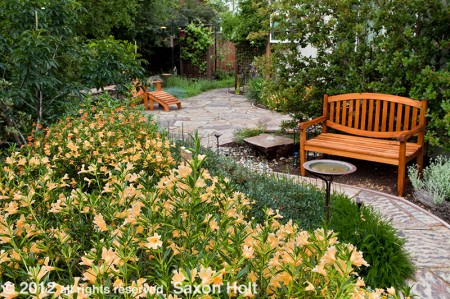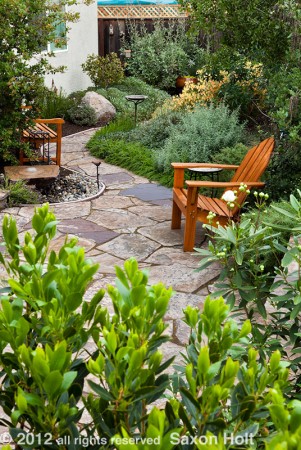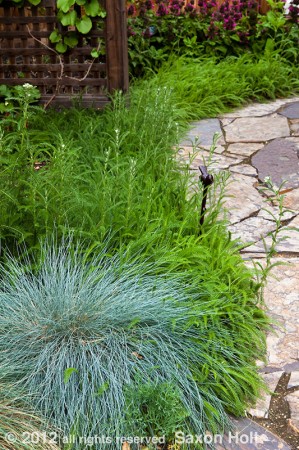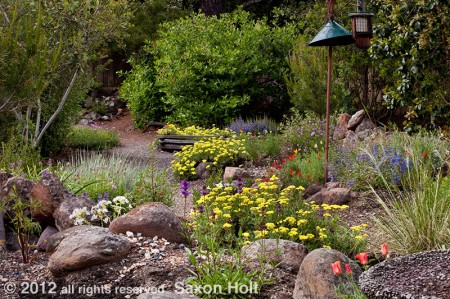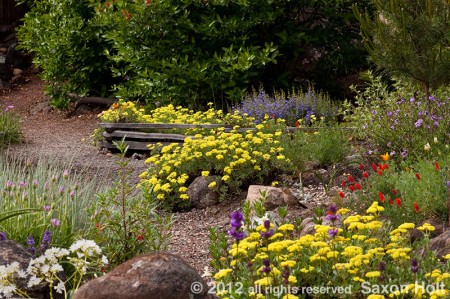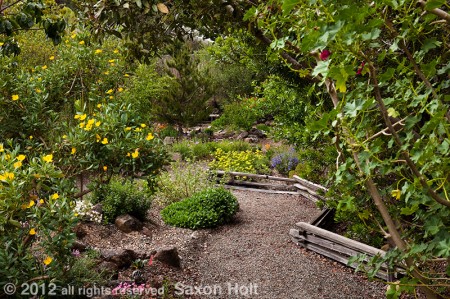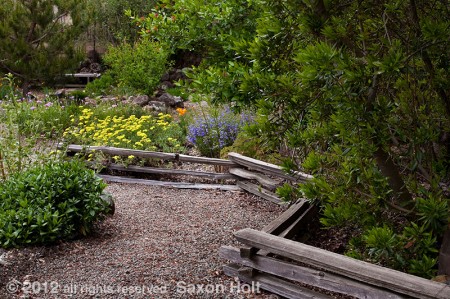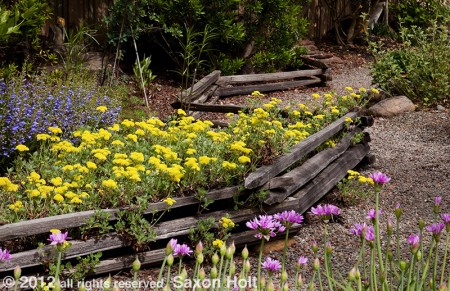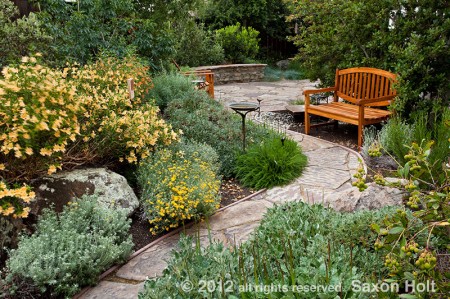 Native plant gardens tend to be hard to photograph. Often the gardeners care more about the plants and habitat than the aesthetics. This is perfectly OK – unless you are trying to photograph them.
Native plant gardens tend to be hard to photograph. Often the gardeners care more about the plants and habitat than the aesthetics. This is perfectly OK – unless you are trying to photograph them.
We need better photographs of native plant gardens to encourage those gardeners who DO care about aesthetics, who want to do the right thing by way of sustainability, and don’t realize how beautiful natives can be. To encourage more native plant gardening I have set out to find more gardens, and the photos within.
When trying to find a photo in a garden, one of my key tools is to look for leading lines. These are lines you, the photographer, find in a garden that can lead the viewer’s eye into the photo. These lines can frame your composition and lead to focal points as well, but fundamentally they must start at the bottom, out of the frame, and lead up into the composition.
They can be fences, walls, streams, rows of plants, hedges, and especially pathways. I was particularly happy to find a couple gardens through Kathy Kramer’s Bringing Back the Natives garden tour this year that used pathways effectively.
Note the first two photos are the same path from the same end of the garden. The second one is a much better showcase of the Sticky Monkey Flower (Mimulus aurianticus) but I like the first one and its sensuous “S” curve as a great leading line, making this small garden seem bigger than it is.
Here is a vertical shot looking back the other direction.
Note, by obscuring the wide part of the patio at the bottom, I am able to take advantage of a relatively small section of the path’s leading line.
Vertical photos that find leading lines in them can become powerfully graphic, as this one using the green foliage of the Achillea to lead the eye through the photo. Another strong “S” curve.
(See this location? It is leading out of the garden, upper middle in the second photo.)
In some gardens it is a little harder to find leading lines when you are trying to make a composition and find a photo. I was particularly excited to find Al Kyte’s Moraga garden because it is so mature, 40 years in the making, but leading lines were not so obvious.
The paths are dirt and not as well delineated as that first Kat Weiss designed garden. But in trying to find a photo here, look at the repetitive yellow flowers of the Sulfur Buckwheat (Eriogonum umbellatum). Let’s make a leading line out of them.
And next let’s use the path itself, but noting it is really the repetitive yellow that helps us see the line that adds so much to the composition. Also, be aware that all these lines, in each photo, lead up and across the frame. Unless the garden design is powerfully graphic don’t start your leading line in the center going straight up.
In the photo above, see the low split rail fence ? It leads off to another path and was my favorite design element in the garden.
The low fence helps enormously in defining the edge of the path and the border, giving each a clear space and shape. Whenever you can identify edges like this, you can find a leading line.
The fence defining the edges is really the story here. The wider shot was more about the habit of the garden.
Looking back down the path the other direction, the fence is the only design element holding the photo together. The Sulfur Buckwheat in this final photo is the same one (top) of three found in the first examples.
Without the fence defining the line the photo would have never been taken. When framing up a picture in your camera, always be thinking of composition and how to make the viewer see what you see.
More photos of Al Kyte’s California native plant garden can be found in my PhotoBotanic Archive

